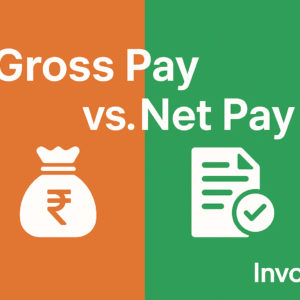Paper trading serves as an essential step for traders who want to transition into the high-stakes environment of futures trading prop firms. It provides a risk-free space to understand market behaviors, refine trading strategies, and become comfortable with real-time decisions. Whether you’re aiming to eventually pass a prop firm evaluation or simply wish to build foundational experience, learning how to start paper trading properly is your entry point to trading success.
Understanding the Concept of Paper Trading
Paper trading is a simulation process where traders can execute hypothetical trades without risking actual capital. The idea is to mirror real market conditions and use live data to track performance. Those who are new to the world of derivatives and commodities often start here to familiarize themselves with various order types, chart patterns, and market reactions without incurring any financial losses.
Knowing how to start paper trading includes more than just clicking “buy” and “sell” on a demo platform. A structured plan, discipline, and review process are necessary to benefit from this practice method. You must treat every simulated trade as if real money is on the line to gain maximum benefit from this phase.
The Role of Paper Trading in Futures Market Preparation
Futures markets move fast and involve leveraged exposure, meaning even small price swings can create significant outcomes. That’s where paper trading comes in as a training ground. Before attempting to trade with actual capital or applying for accounts at futures trading prop firms, your job is to develop a high level of confidence in executing trades.
When learning how to start paper trading, make sure to select instruments you plan to eventually trade in a real account, such as commodities, indices, or interest rate futures. This approach ensures a smooth transition later. Use this time to explore price movement patterns, understand contract expirations, and analyze how economic data releases affect your chosen markets.
Setting Clear Goals Before You Start
Before beginning your paper trading journey, set goals that align with the expectations of futures trading prop firms. For instance, many such firms seek consistency, risk control, and adherence to a trading plan. You can simulate these expectations in your paper trading environment.
Here are a few goals to consider:
-
Maintain a target win-to-loss ratio
-
Limit daily and weekly drawdowns
-
Log every trade with reasons for entry and exit
-
Follow a predetermined set of rules and stick to them
These goals will make your practice purposeful and help you identify patterns in your trading behavior. Ultimately, they’ll bring you closer to the mindset needed for trading in a funded environment.
Choosing the Right Tools to Start Paper Trading
To begin paper trading effectively, select a platform that allows real-time data access, customizable charts, and portfolio tracking. These features allow you to simulate conditions that mirror a professional trading environment. Take time to explore different types of orders such as market, limit, and stop orders, which are commonly used in futures trading prop firms.
Also, document your strategies. Start simple—maybe with one or two setups. As you refine your skills and gain insights, expand your methods. The focus during this stage should be on precision, not profits.
Transitioning from Paper Trading to Prop Firms
After spending a considerable amount of time mastering how to start paper trading, the next natural step is preparing for prop firm challenges. However, don’t rush the transition. Make sure that your simulated performance is consistent over several weeks or months. That consistency is a sign you’re ready for the evaluation phases that most futures trading prop firms require.
Use your paper trading journal as a record of your growth. It should include detailed entries showing your thought process, trade rationales, and risk decisions. Many successful traders use their journals to spot psychological biases and correct them before entering live markets.
Another important point: don’t discard paper trading after moving to real or funded trading. It remains a valuable space to test new strategies without financial exposure.
Simulating Real Trading Pressure
A key difference between paper and real trading is emotional pressure. When there’s no real money involved, decision-making tends to be more rational. To make your simulated environment closer to real-world trading, set rules such as:
-
Limiting trades per day
-
Trading only during specific market hours
-
Taking breaks after losses
-
Treating every drawdown seriously
By sticking to these personal restrictions, you will condition yourself for the discipline that futures trading prop firms expect.
Common Mistakes to Avoid When Starting Paper Trading
Even in a simulated environment, certain mistakes can lead to inefficient learning:
-
Overtrading to chase wins
-
Ignoring stop-losses because no money is involved
-
Constantly switching strategies without evaluation
-
Not journaling trades
If you make these mistakes early and fail to address them, they can carry over into real trading situations. Therefore, your approach when learning how to start paper trading should be deliberate, focused, and disciplined.
Why Paper Trading Matters for Prop Firm Readiness
To succeed with futures trading prop firms, traders must demonstrate control, consistency, and strategy adherence. Paper trading is not just a way to practice—it is a way to mold yourself into the kind of trader that can thrive within a structured funded trading model.
By treating your simulation period with seriousness, you’re doing more than just practicing trades; you’re developing a professional routine. The deeper your paper trading experience, the better prepared you’ll be for live trading assessments.
Final Thoughts
Learning how to start paper trading effectively is the gateway to success in the futures market. It lays the groundwork for building the technical and emotional skills necessary to join futures trading prop firms and manage larger capital responsibly. Don’t treat this phase lightly. Build habits, refine strategies, and simulate real-world pressure so that when opportunity comes, you’re ready—not just hopeful.
If approached seriously, paper trading becomes more than a practice—it becomes a performance rehearsal for your future as a funded futures trader.







